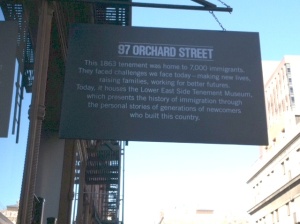One recent tagline I had seen for The New York Times Travel Show was “See the World. Be Home in Time for Dinner.” First out firsthand for yourself when this annual show opens to the general public Saturday, March 1, and Sunday, March 2, at the Jacob K. Javits Convention Center.
This year, more than 500 destinations around the globe will be represented. Walking through this consumer trade show is like hopping to different parts of the world in a day’s length. It can get overwhelming, as the travel show attracts many visitors. Here is a map, so to speak, for getting around.
The setup on the show floor is segmented by continent or country. The United States or Europe can be found in certain areas, while you have to cross another area to learn more about Africa, the Caribbean, Asia, or Latin America. Then, there are subdivisions for specific travel interests such as cruises and adventure-minded excursions.
 Vendor booths feature reps from hotel/resort properties, tourism boards, tour companies, public attractions and gadget/apparel companies. From booth to booth, you’ll find brochures and tchotchkes – remember it can end up being a lot to carry home – as well as special show promotions or giveaways where you need to provide your information.
Vendor booths feature reps from hotel/resort properties, tourism boards, tour companies, public attractions and gadget/apparel companies. From booth to booth, you’ll find brochures and tchotchkes – remember it can end up being a lot to carry home – as well as special show promotions or giveaways where you need to provide your information.
Another way to take in the show is to check out the programming offered throughout the weekend. There are travel seminars where leading experts share their input on topics ranging from top destinations to go to this year to savvy money saving tips. Definitely make it a point to listen to Arthur Frommer, founder of Frommers guidebooks, and his daughter, Pauline Frommer. They are very nice and well respected in their field.
Stage performances consists of educational lectures and demonstrations that showcase customs and traditions through dance and music. Cooking demos and book signings with top names happen too.
In all, here is what you need to know if you plan to go to The New York Times Travel Show:
· Saturday, March 1: from 10 AM to 6 PM
· Sunday, March 2, from 11 AM to 5 PM
Consumer tickets are at $17, plus NY sales tax. Children 18 and under are free.
You can purchase tickets in advance or in person. For tickets and the entire show schedule, see this link. I’ll be around this weekend. Who else is going?







